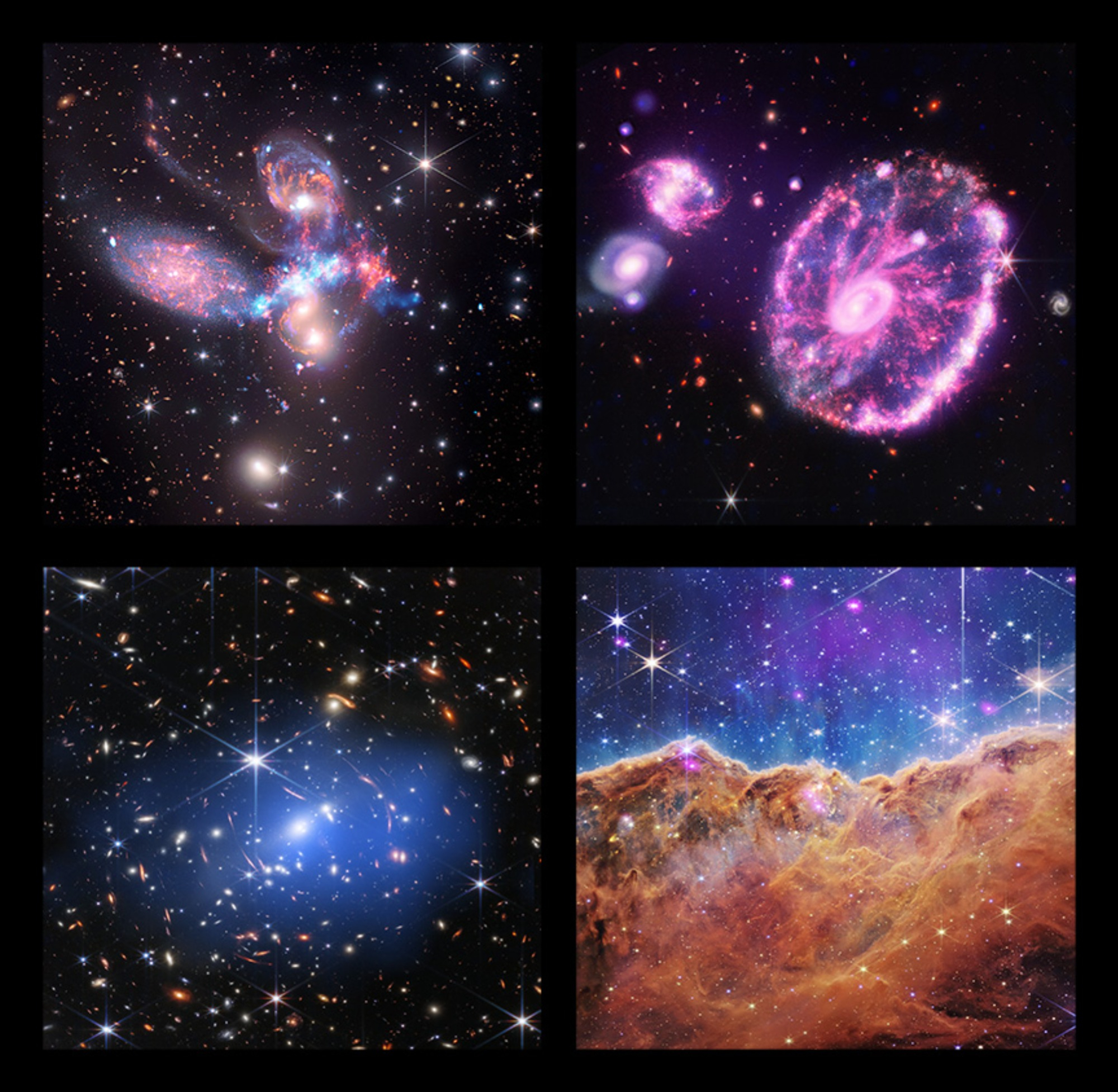

When the James Webb Space Telescope (JWST) sent back its first images this summer, many of us were gobsmacked at the clarity and beauty of the pictures. But even space telescopes work best with a little support, and JWST has been designed to work with many other telescopes and facilities. Four of JWST’s first images are now getting a little jolt from x-ray vision thanks to NASA’s Chandra X-ray Observatory. These re-mixes of the original images from JWST are composites, meaning they are layered to include data from multiple telescopes. The stellar snapshots show how much more powerful telescopes are when they work together and reveal some feature’s that weren’t visible to JWST alone, according to NASA.
Stephan’s Quintet

[Related: The James Webb Space Telescope’s first glimpses into deep space reveal 4 mind-blowing finds.]
Four galaxies within Stephan’s Quintet (about 620,000 lightyears across) are doing an intricate dance with gravity. The fifth galaxy is merely an observer, watching from a distance. The images of the quintet taken by JWST (which have red, orange, yellow, green, and blue colors) shows never-seen-before features and details of the, “results of these interactions, including sweeping tails of gas and bursts of star formation,” according to NASA. The Chandra data (in light blue) of this same system shows a shock wave heating up gas to tens of millions of degrees, while one of the galaxies passes through at about 2 million miles per hour. Infrared data from NASA’s now-retired Spitzer Space Telescope (shown in red, green, and blue) as also included.
Cartwheel Galaxy

The acrobatic Cartwheel galaxy is shaped this way due to a a collision with another smaller galaxy roughly 100 million years ago. Star formation on its outer ring and other places in the galaxy was triggered when the smaller galaxy punched the Cartwheel. Chandra X-rays, shown in blue and purple, are due to, “superheated gas, individual exploded stars, and neutron stars and black holes pulling material from companion stars,” said NASA in a statement. JWST offers an infrared view in red, orange, yellow, green, and blue shows the Cartwheel galaxy and two smaller companion galaxies that were not involved in the 100 million year old collision.
SMACS 0723.3–7327

Located about 4.2 billion light-years away from Earth, JWST’s data shows that the galaxy cluster SMACS J0723 actually contains hundreds of individual galaxies. These galaxy clusters more than their galaxies—they’re some of the biggest structures in the universe. These clusters are, “filled with vast reservoirs of superheated gas that is seen only in X-ray light,” according to NASA. The Chandra data (shown in blue) shows really hot gas. This gas is roughly tens of millions of degrees and has a total mass of about 100 trillion times that of our sun, several times higher than the mass of all of the galaxies in the cluster. A larger fraction of the mass in this cluster is made up by individual dark matter.
[Related: This kilonova could have created the first-ever extragalactic ‘sonic boom.’]
NGC 3324, The Cosmic Cliffs of the Carina Nebula

Cliffs are not just for climbing back on Earth. Chandra’s data of the “Cosmic Cliffs” (shown in pink) in the Carina Nebula reveals over a dozen individual X-ray sources. These stars on the nebula’s outer region are between 1 and 2 million years old, quite young in stellar terms. Typically, young stars are much brighter in X-rays than older stars, so X-ray studies are an, “ideal way to distinguish stars in the Carina Nebula from the many stars of different ages from our Milky Way galaxy along our line of sight to the nebula,” said NASA. The JWST data uses red, orange, yellow, green, cyan, and blue in this image as well.
